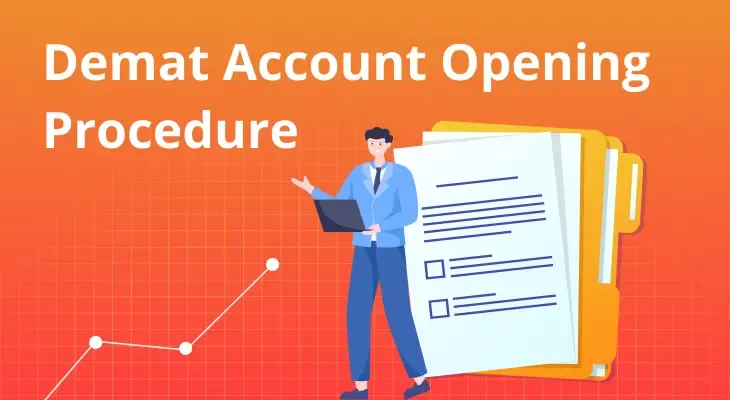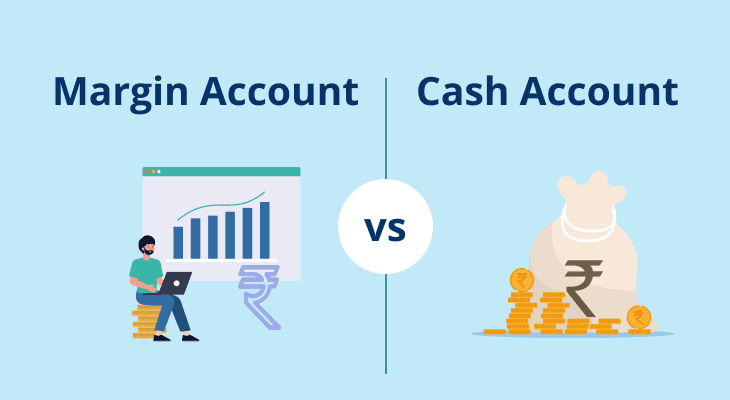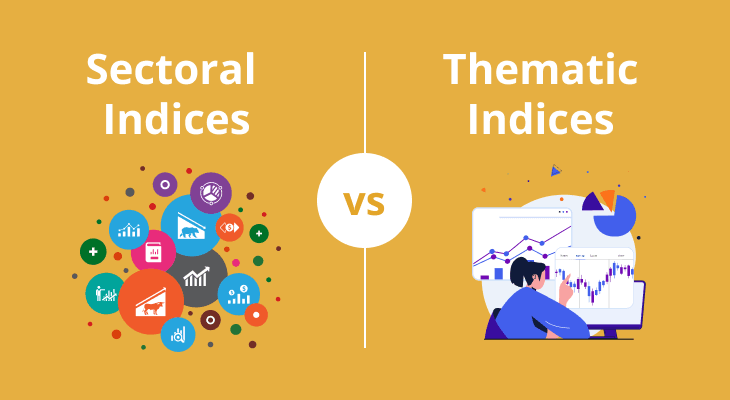
Table of content
- Aims and Objectives of a Demat Account
- Transfer, Closure, cum Waiver (TCW) Procedure
- Demat Account Opening Procedure
- Depository Concepts
- Getting into Securities' Dematerialization
- Procedure of Dematerialization
- Dematerialisation Credit
- Transmission cum Demat
- Transposition cum Demat
- Re-materialisation
- Freezing and De-freezing
- Closure
- Conclusion
Demat Account Concepts & Processes
You've probably heard about Demat Accounts, but do you really know what they are and how they can help you? This article will help simplify the complexities of Demat accounts, shedding light on various concepts and procedures of a Demat account.
Aims and Objectives of a Demat Account
A Demat account, short for "dematerialised account," is like a digital storage for different financial assets —like stocks, bonds, mutual funds, and exchange-traded funds (ETFs). The main goal of a Demat account is to get rid of paper certificates, making things smoother, reducing the chances of losing or damaging certificates, and making trading easier.
Transfer, Closure, cum Waiver (TCW) Procedure
You have the option to shift your holdings from one Demat account to another institution without incurring extra fees. By making this decision, the Beneficiary Owners' (BO) accounts at both the current Depository Participant (DP) and the new DP will be the same. If you intend to transfer a joint Demat account, you must establish a new account with the exact same names.
Demat Account Opening Procedure
The process of starting a Demat account follows some clear steps. These steps make sure you are who you say you are and follow the rules. Listed below are the steps to open a Demat account:
Choosing A Depository Participant (DP)
A DP is a middleman registered with a depository, like NSDL or CDSL, who helps with Demat services. You need to pick a good DP that suits you.
Completing The Application Form
Acquire the application form required for opening a Demat account from your chosen DP. Fill in your personal details, along with copies of documents like the PAN card, Aadhar card, and other necessary credentials.
Verifying KYC Details
The Know Your Customer (KYC) verification is an important step in initiating your account. Presenting the required documents for verification serves a dual purpose: it prevents illegal activities and shows your adherence to regulatory standards.
Signing The Agreement
The formal agreement between you and the DP, referred to as the DP-client agreement, should be duly completed. This agreement outlines the terms and conditions that govern your Demat account, ensuring transparency and mutual understanding.
In-Person Verification (IPV)
Some DPs might require in-person verification with your original documents to ensure everything is real.
Starting Your Account
Once they check your details and documents, you get an account number and other relevant details. This means your Demat account is operational and ready to go.
Depository Concepts
Understanding depositories is crucial when we talk about Demat accounts. A depository holds securities in electronic form, making sure everything is safe and easy to store and transact. In India, there are two main depositories: National Securities Depository Limited (NSDL) and Central Depository Services Limited (CDSL). These depositories work with their DPs to facilitate the functioning of Demat accounts.
Getting into Securities' Dematerialization
Converting physical share certificates into digital ones is what we call dematerialization. In this process, you give your physical certificates to the DP, who then asks the depository to make them digital. Once approved, the electronic securities are reflected in your Demat account. This eliminates the risks associated with physical certificates, such as loss, theft, or forgery.
Procedure of Dematerialization
To start the process of dematerialization, follow these steps:
Filling The Dematerialization Request Form
Obtain the Dematerialization Request Form (DRF) from your DP and fill in what securities you want to dematerialize.
Handing Over Physical Certificates:
Attach the physical certificates to the DRF and give them to your DP. Make sure you have signed across the face of each certificate.
Checking And Processing
The DP verifies the details and sends the DRF to the depository. The depository cross-verifies the details with the issuer and processes the dematerialization request.
Getting Digital Credits
Upon successful processing, the electronic equivalent of the securities is credited to your Demat account.
Dematerialisation Credit
When your Demat account is credited with dematerialised securities, you'll receive a statement containing details of the credited securities. This statement acts as proof of ownership, and you can use it for various purposes, including tracking your investments and proving your ownership in case of disputes.
Transmission cum Demat
In the unfortunate event of the account holder's demise, the securities held in their Demat account need to be transferred to the nominee or legal heir. This process is known as transmission cum Demat. The nominee or legal heir needs to provide the necessary documents, such as the death certificate, legal heir certificate, and transmission request form, to the DP for processing.
Transposition cum Demat
Transposition cum Demat refers to changing the order of securities' ownership in a Demat account. This could involve changing the sequence of names or the order of ownership percentages. The account holder needs to submit a transposition request form to the DP along with the required documents for demat account processing.
Re-materialisation
Even though digital securities are the norm, sometimes you might want physical certificates. This is when re-materialization comes in. Here's what you need to do:
Filling The Re-Materialisation Request Form
Get the Re-materialisation Request Form (RRF) from your DP and fill in the details of the securities you want to re-materialize.
Sending The Request
Hand over the filled RRF to your DP, and they take it from there.
Verification And Processing
The DP forwards the request to the depository. Once verified, the depository informs the registrar and transfer agent (RTA) of the issuer, who then prints the physical certificates.
Getting Physical Certificates
These physical certificates are sent to your registered address.
Freezing and De-freezing
Investors have the option to freeze or de-freeze their Demat accounts. Freezing prevents any debit or credit transactions in the account, providing an added layer of security. De-freezing reverses the freezing status, allowing transactions to take place.
Closure
When you're done with your Demat account, you need to close it properly. Typically, this involves submitting a closure request form, surrendering unused delivery instruction slips, and settling any pending dues. Once the closure request is processed and all formalities are completed, your Demat account will be closed.
Conclusion
In the world of investing, Demat accounts play a big role. They make things smoother and safer. Whether you're safeguarding your financial future or diversifying your investment portfolio, understanding the concepts and processes associated with Demat accounts is a fundamental step. By familiarising yourself with the Demat account opening procedure, dematerialization, rematerialization, and other key processes, you empower yourself to navigate the financial markets with confidence and efficiency.
Remember, a well-informed investor is a confident and successful one. So, gear up to navigate the financial landscape with clarity and confidence, armed with the know-how of Demat accounts.
FAQ
Why is a Demat account necessary for investors?
A Demat account is an electronic repository for holding various financial securities like stocks, bonds, mutual funds, and more in digital form. It eliminates the need for physical share certificates, making trading and investing more convenient, secure, and efficient. A Demat account is necessary for investors as it offers a paperless way to manage investments, reduces the risk of loss or damage to physical certificates, and facilitates easy buying and selling of securities.
How do I open a Demat account, and what documents are required?
Opening a Demat account involves selecting a Depository Participant (DP), filling out an application form, completing the Know Your Customer (KYC) process, signing the DP-client agreement, and undergoing in-person verification if necessary. The required documents typically include a PAN card, Aadhar card, address proof, passport-size photos, and a cancelled cheque for bank account details.
How can I keep track of my holdings and transactions in my Demat account?
Depositories and DPs provide regular statements, both physical and electronic, that detail your holdings and transactions in your Demat account. You can also access your account online through the DP's website to view real-time updates, transaction history, and account statements.


